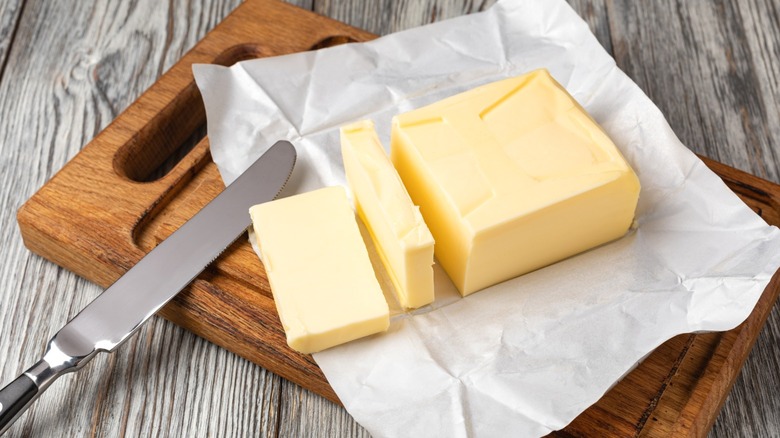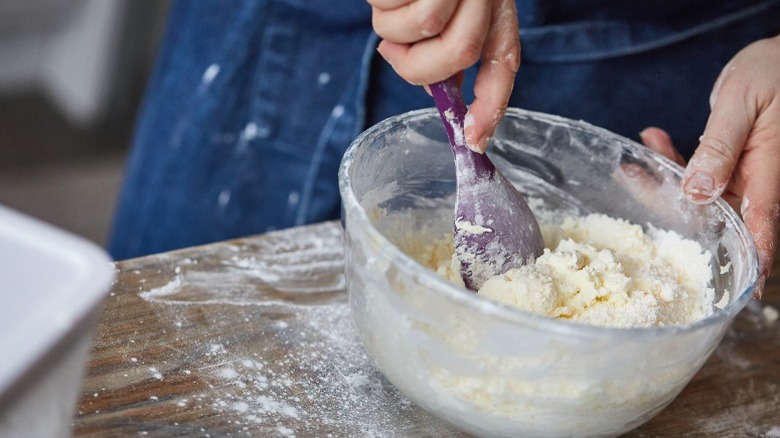Why Butter Temperature Matters So Much In Baking
If you've ever done any baking in your life, you've probably seen certain notes next to a specific ingredient. When it comes to butter, some recipes, like chocolate chip cookies, for instance, will insist you use unsalted butter that has been allowed to come to room temperature. But if you're making scones or these three-ingredient biscuits, the recipe will tell you to use cold butter. What gives? Do recipe writers just want to be fussy and make it your problem? Nope. Using butter at the wrong temperature can result in hard biscuits and patchy cookies, and nobody wants that.
We talked to Sofia Schlieben, Corporate Pastry Chef at JF Restaurants, and asked her about the importance of butter temperature. The difference, she says, comes from whether the butter is mixed into a batter or folded into layers. "Use room-temperature butter for things like cookies and cakes, where it's meant to be fully mixed in. Use cold butter to create flaky layers in things like puff pastry, pie dough, or scones."
If you don't heed this advice, the consequences can be dire. "If you use room temp butter for puff pastry, pie dough, or scones, you'll end up with overworked, dense dough pucks," Schlieben says. "If you use cold butter for cookies or cakes, it will seize — clump up and create greasy holes in your bake."
What should you do if the recipe doesn't specify butter temperature?
But of course, things can't just be easy, can they? Some recipe writers, either out of carelessness or simply assuming you'll know what to do, will neglect to mention butter temperature entirely. What should you do then? Throw your stand mixer out the window and cry? Not necessary! Just be mindful of what you're making. Chef Sofia Schlieben says, "Think about the purpose of butter in the recipe — context is key. Understand what the ingredient is meant to do: butter contributes flavor, texture (fat), and leavening." And if the primary purpose of the butter is to provide leavening (or rise), as with high-rising scones, that's a sure sign: "For leavening, you'll always want cold."
Another thing to remember is that "room temperature butter" will depend upon, well, the actual temperature of your room. Schlieben explained that typically, room temp is between 65 and 70 degrees Fahrenheit. "But you may want to adjust based on your actual kitchen temperature," she added. So, if your kitchen is 85 degrees Fahrenheit, use slightly cooler butter, and if your room is cold, say 45 degrees Fahrenheit, you'll want your butter to be about 68 to 72 degrees Fahrenheit.

